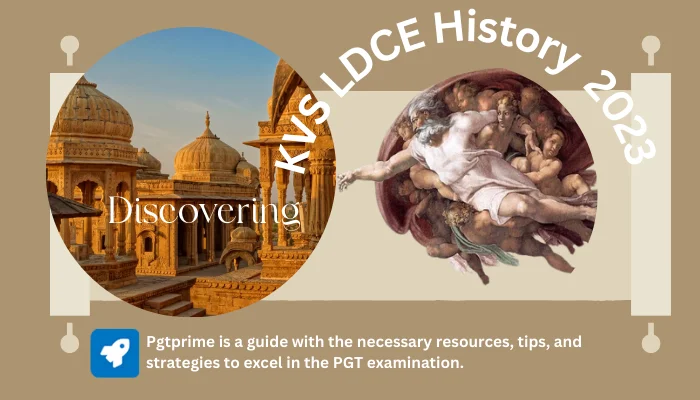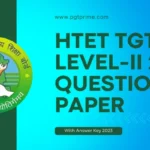👉FROM (Q.101-To-Q.120)
101. Who gave the name -’ Phoenix’to M K Gandhi’s Farm in South Africa?
- Herman Kalenbach
- Alexander Doke
- Gopal Krishna Gokhale
- H.S. Polack
Answer: KVS LDCE History Question Paper and Answers PDF 2023
(1) Herman Kalenbach
Hermann Kallenbach named the farm after Leo Tolstoy. Kallenbach, a close associate and friend of Mahatma Gandhi, admired Tolstoy’s ideas on nonviolence, simplicity, and communal living. As a tribute to Tolstoy’s influence, Kallenbach named the farm “Phoenix,” symbolizing rebirth and renewal.
102. During Non-Cooperation movement where did Mahatma Gandhi launch no-tax campaign?
- Ahmedabad
- Bardoli
- Champaran
- Wardha
Answer: KVS LDCE History Question Paper and Answers PDF 2023
(2) Bardoli
Bardoli is a region in Gujarat, India. The no-tax campaign aimed to encourage people to refuse payment of taxes to the British government as a form of civil disobedience and protest against British rule. The campaign in Bardoli was one of the significant initiatives undertaken during the Non-Cooperation movement led by Mahatma Gandhi.
103. Which town in Bengal remained a part of French possessions in Colonial India?
- Chandernagore
- Murshidabad
- Bolpur
- Alipore
Answer: KVS LDCE History Question Paper and Answers PDF 2023
(1) Chandernagore
Chandernagore, also known as Chandannagar, is located in the Hooghly district of West Bengal. It was a French colonial settlement from the 17th century until 1950 when it was integrated into the Indian Union. Chandernagore was one of the five French settlements in India along with Pondicherry, Karaikal, Mahe, and Yanam.
104. Which one of the following statements is not correct about the first provisional government of India in exile established in 1915?
- Raja Mahendra Pratap was its President
- Its headquarter was at Bagh-i-Babur at Kabul in Afghanistan
- This had support from external powers like Germany, Russia, Turkey and Afghanistan
- Champak Raman Pillai was its Prime Minister
Answer: KVS LDCE History Question Paper and Answers PDF 2023
(4) Champak Raman Pillai was its Prime Minister
Raja Mahendra Pratap was indeed the President of the first provisional government of India in exile. Its headquarters was established at Bagh-i-Babur at Kabul in Afghanistan. The provisional government did receive support from external powers like Germany, Russia, Turkey, and Afghanistan.
105. Who among the following was not associated with the London based centre of revolutionary activities abroad ?
- Shyamji Krishna Varma
- V.D. Savarkar
- Lala Har Dayal
- Lala Lajpat Rai
Answer: KVS LDCE History Question Paper and Answers PDF 2023
(4) Lala Lajpat Rai
Lala Lajpat Rai was primarily active within India and did not have direct involvement with the revolutionary activities based in London. On the other hand, Shyamji Krishna Varma, V.D. Savarkar, and Lala Har Dayal were notable figures associated with the London-based center and played crucial roles in organizing and promoting revolutionary activities from abroad.
106. Which one of the following statements is correct about the protectionist policy in 19th century?
- Capitalists were provided police security at factories
- Each country reduced import duties
- Most of the countries put heavy tariffs on goods imported
- Workers were protected against wage inequalities
Answer: KVS LDCE History Question Paper and Answers PDF 2023
(3) Most of the countries put heavy tariffs on goods imported
During the 19th century, many countries implemented protectionist policies to shield their domestic industries from foreign competition. This often involved imposing high tariffs or import duties on imported goods to make them more expensive and less competitive in the domestic market. The purpose was to promote domestic industries, protect local jobs, and reduce dependence on foreign goods.
107. From among the following pairs regarding colonial America, which one is not correctly matched?
| (1) The Molasses Act | – | 1753 |
| (2) The Colonial Currency Act | – | 1764 |
| (3) The Quartering Act | – | 1765 |
| (4) Watunga Settlement in Eastern Tennessee | – | 1769 |
Answer: KVS LDCE History Question Paper and Answers PDF 2023
(1) The Molasses Act
The Molasses Act was enacted by the British Parliament in 1733, not in 1753. It aimed to impose a tax on imported molasses and sugar from non-British colonies, particularly affecting trade between the American colonies and the French West Indies.
The Colonial Currency Act of 1764 was an act passed by the British Parliament that regulated the issuance and use of paper currency in the American colonies. It prohibited the colonies from issuing their own paper money as legal tender and required them to use only British currency.
The Quartering Act of 1765 was another act passed by the British Parliament that required colonial governments to provide housing, food, and other provisions for British soldiers stationed in the colonies.
Watunga Settlement in Eastern Tennessee refers to the establishment of a settlement by European settlers in present-day Tennessee in 1769. The settlement was led by William Bean, who is considered one of the first permanent white settlers in Tennessee.
108. Who among the following was not associated with Rehnumai Mazdayasan Sabha (Religious Reform Association) established in 1851 ?
- Naoroji Furdonji
- S.S. Bengalee
- Dadabhai Naoroji
- W.C. Banarjee
Answer: KVS LDCE History Question Paper and Answers PDF 2023
(4) W.C. Banarjee
Rahnumai Mazdayasnan Sabha was founded by a group of English-educated Parsis in 1851. Leaders of the movement included Naoroji Furdonji, Dadabhai Naoroji, K.R. Cama, and S.S. Bengalee.
109. Which one of the following is not part of teachings of Swami Dayanand ?
- He treated Vedas as infallible and inspired words of god
- He treated Puranas with full of false teachings
- He encouraged idol worship
- He favoured study of western sciences
Answer: KVS LDCE History Question Paper and Answers PDF 2023
(3) He encouraged idol worship
Swami Dayanand , the founder of the Arya Samaj, emphasized the importance of the Vedas and considered them as infallible and inspired words of God. He criticized the Puranas and other scriptures that he believed contained false teachings. Additionally, he advocated for the study of Western sciences and promoted a rational and scientific approach to knowledge.
110. Which of the following statements about the Child Marriage Restraint Act, 1929 is not correct?
- It was also called the Sarda Act
- It raised the age of marriage for girls to 18 years
- All India Women’s Conference played an important role in its passing
- Public opinion was in full support of it
Answer: KVS LDCE History Question Paper and Answers PDF 2023
(2) It raised the age of marriage for girls to 18 years.
The Child Marriage Restraint Act,1929, commonly known as the Sarda Act, did not raise the age of marriage for girls to 18 years. It set the age of marriage for girls at 14 years and for boys at 18 years. The act aimed to restrict child marriages and provide legal measures to prevent the solemnization of marriage where one or both parties were underage. The act was named after its sponsor, Harbilas Sarda and it was indeed supported by the All India Women’s Conference and had public support in general.
111. From among the following groups whose interest did the Unionist Party mainly represented?
- Shahukars, the money lending class
- Hindu, Muslim, and Sikh
landholders
of Punjab - Landless labourers of Punjab
- Princely States of Punjab
Answer: KVS LDCE History Question Paper and Answers PDF 2023
(2) Hindu, Muslim, and Sikh landholders
of Punjab
The party emerged in Punjab during the 1920s and gained significant support from the agricultural landowning communities. It aimed to protect the rights and interests of these landholders, who were predominantly from the Hindu, Muslim, and Sikh communities.
112. Which among the following were the earliest public associations established before the Indian National Congress in India ?
- Madras Mahajana Sabha
- Bombay Presidency Association
- Landholders Society
- Poona Sarvajanik Sabha
Answer: KVS LDCE History Question Paper and Answers PDF 2023
(3) Landholders Society
The earliest public associations established before the Indian National Congress in India were:
- Landholders Society: The Landholders Society was founded in Bengal in 1838 and primarily represented the interests of the landowning classes.
- Poona Sarvajanik Sabha: The Poona Sarvajanik Sabha was established in 1867 in Pune, Maharashtra, and worked towards promoting education, social reforms, and political awareness among the masses.
- Madras Mahajana Sabha: The Madras Mahajana Sabha was established in 1884 and played a significant role in advocating for political and social reforms in Madras (now Chennai) Presidency.
- Bombay Presidency Association: The Bombay Presidency Association was formed in 1885 and aimed to address the political concerns of the people in the Bombay Presidency (now Maharashtra and Gujarat).
113. Chalo Jahaji
is known as :
- A call given by Subhash Chandra Bose to the Naval Mutineers in India
- A call given by Gandhiji to Indian migrants to South Africa
- Title of a book dealing with indentured migration
- Trade Union call for dockyard workers
Answer: KVS LDCE History Question Paper and Answers PDF 2023
(3) Title of a book dealing with indentured migration
Chalo Jahaji is known as the title of a book dealing with indentured migration. The book, titled “Chalo Jahaji: On a Journey Through Indenture in Fiji,” was written by Brij V. Lal and published in 2000. It explores the history and experiences of Indian indentured laborers who were brought to Fiji and other parts of the world during the colonial period. The term “Chalo Jahaji” itself refers to the call used by recruiters to encourage Indian laborers to board the ships (Jahaji) and embark on their journey to distant lands for indentured labor.
114. In which year was the Tokugawa rule overthrown and the Meiji government established?
- 1854
- 1860
- 1868
- 1869
Answer: KVS LDCE History Question Paper and Answers PDF 2023
(3) 1868
The Tokugawa rule was overthrown, and the Meiji government was established in the year 1868. The political power shifted from the Tokugawa shogunate to the emperor and a new era of modernization and Westernization began. The Meiji government implemented various reforms to modernize Japan’s political, economic, and social systems and to strengthen the country’s position on the international stage.
115. When did Mao Zedong (Mao Tse Tung) announce the policy of the Great Leap Forward
?
- 1955
- 1958
- 1960
- 1961
Answer: KVS LDCE History Question Paper and Answers PDF 2023
(2) 1958
Mao Zedong (Mao Tse Tung) announced the policy of the Great Leap Forward in the year 1958. To rapidly transform China from an agrarian society to an industrialized nation. The policy aimed to achieve massive economic growth and increase agricultural and industrial production through collective farming and centralized planning. However, the Great Leap Forward ultimately led to disastrous consequences, including widespread famine and economic instability.
116. Which one of the following is not a principle under the Panchsheel Treaty?
- Mutual respect for each other’s territorial integrity
- Not sharing natural national resources
- Mutual non-interference in each other’s internal affairs
- Peaceful co-existence
Answer: KVS LDCE History Question Paper and Answers PDF 2023
(2) Not sharing natural national resources
The Panchsheel Treaty, also known as the Five Principles of Peaceful Coexistence, was a set of principles that formed the basis of India-China relations. The principles included
- mutual respect for each other’s territorial integrity
- mutual non-interference in each other’s internal affairs
- peaceful co-existence
- equality
- mutual benefit
117. Which of the following was not an objective of the Bahiskrit Hitkarini Sabha
established by Dr. Bhim Rao Ambedkar in 1924.
- Emancipation of the Untouchables
- Eradication of illiteracy of the backward classes
- To fight for the political and legal rights of the victims of untouchability
- To seek reforms in the religious order to improve the status of the untouchables
Answer: KVS LDCE History Question Paper and Answers PDF 2023
(4) To seek reforms in the religious order to improve the status of the untouchables.
While the other objectives mentioned were indeed part of the agenda of the Bahiskrit Hitkarini Sabha, seeking reforms in the religious order was not specifically listed as one of their objectives. The focus of the organization was primarily on the emancipation of untouchables, eradication of illiteracy, and the fight for political and legal rights.
118. Who among the following was the first Asian writer to win the Nobel Prize for literature in 1913?
- Prem Chand
- Rabindra Nath Tagore
- Aurobindo Ghose
- Amartya Sen
Answer: KVS LDCE History Question Paper and Answers PDF 2023
(2) Rabindra Nath Tagore
The first Asian writer to win the Nobel Prize for Literature in 1913 was Rabindranath Tagore. Rabindranath Tagore, a renowned Indian poet, playwright, and philosopher, was awarded the Nobel Prize in Literature for his collection of poems called “Gitanjali” (Song Offerings). He became the first non-European to receive this prestigious honor.
119. Which of the following combinations of the playwriters and the language of their plays is not correctly matched?
| (1) Vijay Tendulkar | – | Marathi |
| (2) Girish Karnad | – | Kannada |
| (3) Bhishma Sahni | – | Oriya |
| (4) Upendranath Ashk | – | Hindi |
Answer: KVS LDCE History Question Paper and Answers PDF 2023
(3) Bhishma Sahni – Oriya
Bhishma Sahni is a renowned Indian playwright, but he primarily wrote in Hindi, not Oriya. He is known for his contributions to Hindi literature and theater.
120. Given below are the two statements : One is labelled as Assertion (A) and the other is labelled as Reason (R).
- Assertion (A): Karl Marx and Engels saw the Renaissance as the relation between arts and the economy, i.e., between cultural production and material production.
- Reason (R): They suggested that economic
base
shaped the culturalsuper-structure
.
In the light of the above statements, choose the appropriate Answer from the options given below:
- Both (A) and (R) are correct and (R) is the correct explanation of (A)
- Both (A) and (R) are correct but (R) is not the correct explanation of (A)
- (A) is correct, but (R) is not correct.
- (A) is not correct, but (R) is correct.
Answer: KVS LDCE History Question Paper and Answers PDF 2023
(1) Both (A) and (R) are correct and (R) is the correct explanation of (A).
Karl Marx and Engels did see the Renaissance as the relation between arts and the economy, emphasizing the connection between cultural production and material production. They also suggested that the economic base shapes the cultural superstructure. Therefore, both the Assertion (A) and the Reason (R) are correct, and the Reason (R) provides the correct explanation for the Assertion (A).











